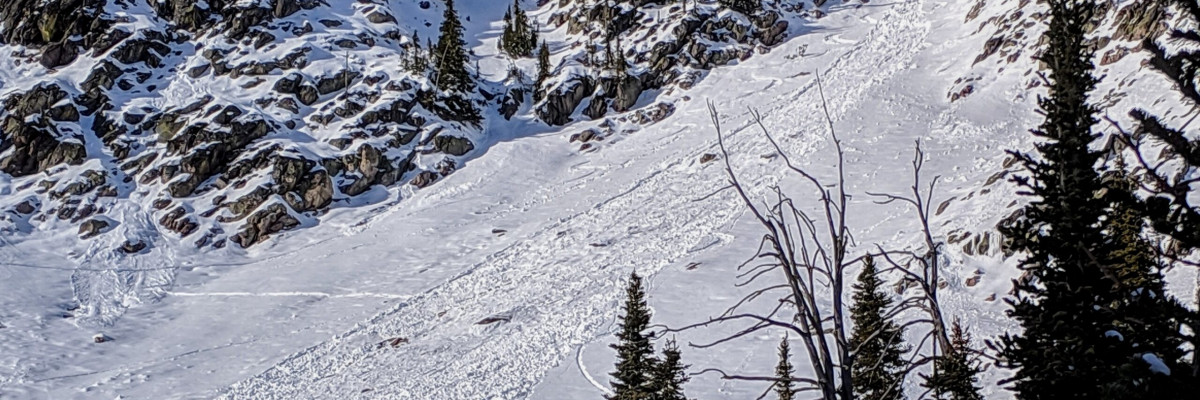The current avalanche danger is Moderate in the west central Montana backcountry above 6000 feet on wind drifted slopes. All other slopes are Low hazard today. Identify wind loaded slopes and avoid them in steep terrain.
Good morning, this is Travis Craft with the West Central Montana Avalanche Center’s avalanche advisory for December 11, 2018. This danger rating does not apply to operating ski areas, expires at midnight tonight and is the sole responsibility of the U.S. Forest Service.
Weather and Snowpack
Mountain temperatures range from 18 F to 28 F in the region. In the Bitterroot winds are 6 mph with gusts of 9 mph out of the SSW. In the northern part of the advisory area, winds are reading 16 mph with gusts of 22 mph out of the West. The forecast area received 2 to 4 inches of new snow in the last 24 hours.
The primary avalanche concern today is wind drifted snow on steep terrain at higher elevations on ridglelines and leeward slopes.
The second avalanche problem is persistent slabs. The new snow is burying the surface hoar from the last high-pressure system. Look for these slabs to become more reactive as more snow accumulates. Use small test slopes with low consequences to see if these slabs are present. Dig a pit to the ground and perform an ECT to see if the buried surface hoar is on the slopes you want to recreate on(video).
There was a skier triggered slide on Murphy peak in the Rattlesnake on Sunday. No one was caught but, you can see by the pictures the consequences of getting caught and carried through steep terrain(Observations).
Avalanche and Weather Outlook
The next couple of days will be a test for our snowpack. With forecasted amounts of snow and high winds look for the avalanche danger to increase. Conditions can change quickly. Evaluate snow and weather conditions as you travel. Click here for the backcountry forecast.
If you do make it out into the hills feel free to share what you see on our public observations page. They are not only helpful to your community but extremely helpful to us.
Ski and ride safe.
























